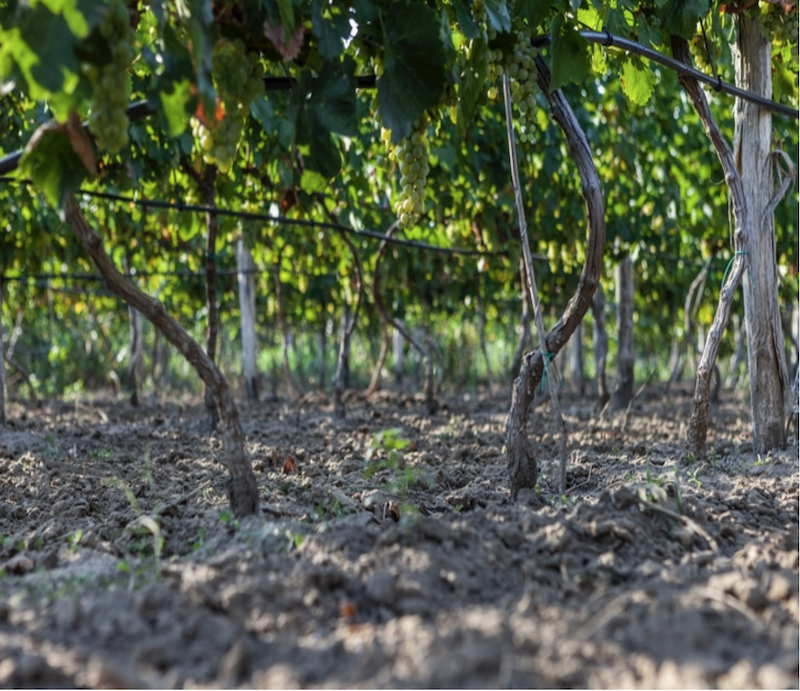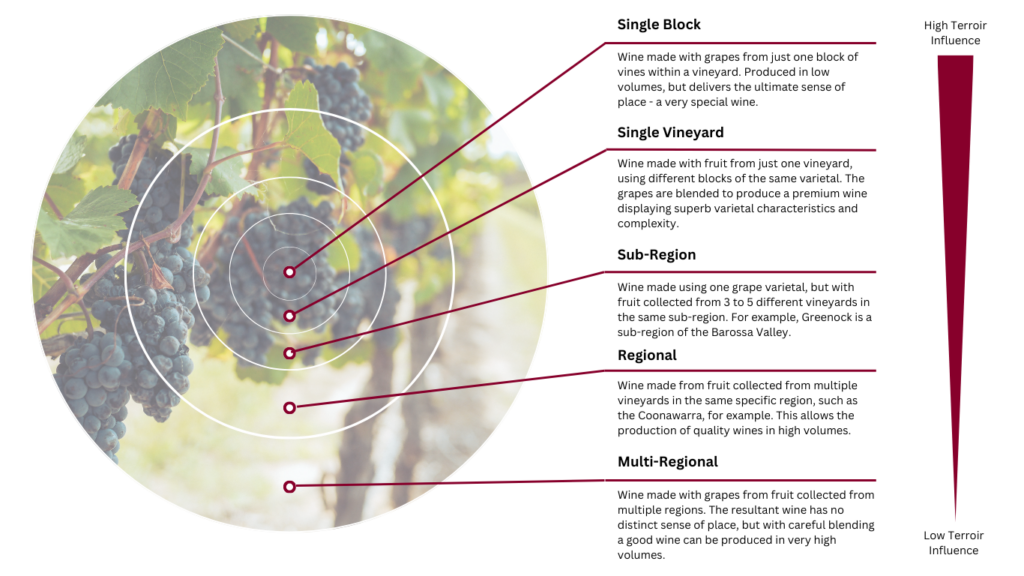
The Concept Of Terroir
In brief terroir is the concept within viticulture that encompasses the full spectrum of environmental factors that influence grapevine growth and wine production, including soil composition, terrain, climate, and biodiversity, as well as the impact of vineyard management and winemaking practices, culminating in the unique characteristics of the wine produced in a specific location.
Key Considerations:
- Comprehensive Definition of Terroir: Terroir is not merely confined to the soil but extends to the entire growing environment, including vineyard location, topographical features (such as slope, altitude, and vineyard orientation), climate conditions (temperature, humidity, wind, rainfall, sunlight), and the surrounding ecosystem’s biodiversity. These factors collectively shape the quality of the grapes and, ultimately, the wine.
- The Role of Soil in Terroir: While soil is an essential element of terroir, it is not the singular determinant of vine health and grape quality. Grape vines are highly adaptable and can thrive in a wide range of soil types. However, what matters most is the soil’s ability to provide adequate drainage while retaining enough moisture and nutrients for the vine’s growth. Well-draining soils are critical in preventing waterlogging, which can damage the vine’s roots, while still providing sufficient moisture during drier periods.
- Influence of Vineyard Management and Winemaking Practices: Although terroir is primarily shaped by natural factors, human intervention through vineyard management practices and winemaking traditions can alter and enhance the expression of these elements. The way a vineyard is managed—such as through irrigation, pruning, and harvesting techniques—can significantly affect the final character of the wine.
- Struggle for Quality: A key principle in viticulture is that grapevines should face a certain degree of struggle in order to produce high-quality fruit. Excessive water and nutrients lead to vigorous vine growth, often at the expense of fruit concentration and complexity. A balanced approach, where vines are allowed to thrive under conditions that challenge them, ensures that energy is directed toward producing smaller, more concentrated, and flavourful grapes, ultimately contributing to the depth and quality of the wine.
Simply put, terroir conveys a sense of place and time.
Discovering the uniqueness of Terroir
Here in Australia, there are a number of vineyard regions that transverse the landscape. Even when the grape variety remains the same, each individual vineyard’s unique characteristics leave an indelible mark on the wine. The concept of terroir is central to this, shaping the flavour of the grape and ultimately determining the taste and structure of the final wine.
This is precisely why wines made from the same grape variety, even within the same region, state, or country, can taste entirely different. The influence of terroir—the combination of soil, climate, and topography—creates wines that tell a story of their specific environment.
This is also why tasting notes often delve into the nuances of terroir, offering insights into the soil composition, slope, rainfall patterns, and the year’s weather conditions. These details help to paint a picture of how the land shapes the wine. However, terroir alone does not dictate the final outcome. The artistry of the winemaker, with their individual techniques and approach, plays an equally vital role, adding layers of distinction to each bottle.
While terroir might seem like a complex concept at first, it boils down to a simple yet profound idea: it is the soul of the vineyard, the “sense of place” that imprints itself on the wine. To truly grasp the essence of terroir, there’s no better way than to explore single-vineyard wines. These wines, sourced from a single, distinct site, offer a pure, unfiltered expression of the land’s unique influence.
To truly understand terroir, you need to experience it firsthand—by savouring the wines that bear the imprint of the land they come from.
The Influence of Terroir on Wine: The Circle of Influence

I understand that terroir can seem complicated and confusing, but it’s actually a powerful
concept that shapes the character of the wine. To simplify this, I’ve created the following
diagram, which I like to call Terroir’s Circle of Influence.
At the centre of the circle are Single Block Wines, which represent the most direct and
impactful example of terroir. Terroir plays a vital role in distinguishing the quality and
unique characteristics of these wines. Single block wines come from specific vineyard blocks
with distinct soil, microclimate, and geography, which give them a strong sense of
place—often reflecting rare earth elements and mineral qualities found only at that vineyard
location.
These wines are typically produced in small volumes by experienced vignerons who have a
deep understanding of their vineyard. They are intimately involved in every aspect of the
vineyard’s care—from pruning to harvesting—which allows them to craft wines that are truly
exceptional and distinctive.
As you move outwards through the diagram, the influence of terroir diminishes. In the outer
circle, terroir is no longer a significant factor in the finished wine. This is where you’ll find
Commercial Wines. These wines are produced on a larger scale, and their main
distinguishing feature is consistency in profile.
These wines are produced using modern winemaking techniques that focus on consistent
extraction, colour, flavour, and appearance. The emphasis is on minimising vintage variation,
ensuring the wine maintains a uniform taste and profile year after year. This approach is well
suited for high-volume production at low cost, with grapes sourced from various regions,
diminishing the importance of terroir. The lack of distinct regional characteristics allows for
the simulation of desired flavours, regardless of grape origin or vintage year.
While these wines lack the unique sense of place which single-vineyard wines have, they
serve an important role in the marketplace, particularly within supermarket chains and large
retail wine outlets where traceability and terroir aren’t key factors in consumer purchasing
decision.
By simplifying terroir into a circle of influence, you can easily see how its impact changes
from single block wines (where terroir is crucial) to commercial wines (where it’s less
relevant). I hope this has help clarify the concept of terrior.
